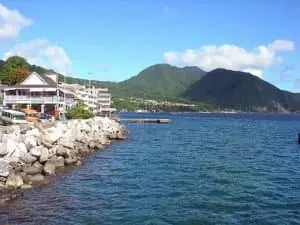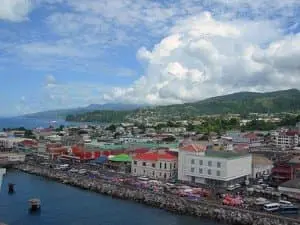Dominica
Dominica (pronounced Dom-in-eek-a) sits midway along the Eastern Caribbean archipelago, just a few miles from Martinique to the south and Guadeloupe to the north.
The island’s official name is the Commonwealth of Dominica, which is mostly referenced only in official communiqué and to distinguish the island from its northerly Caribbean sister, the Dominican Republic. The indigenous Carib Indians named the island Waitukubuli which means “tall is her body” in the Carib language.
The island is sparsely populated with around 70,000 people inhabiting its 289.5 square miles. A significant portion of the population lives in and around the capital city, Roseau. Dominica is an arcadia of unspoiled nature. Tropical forests coat two thirds of the island which nourishes 1,200 plant species. Rivers, lakes, streams, and waterfalls abound fed by the islands high annual rainfall. Its volcanic physique points to extensive geothermal activity above and below sea level.
The island is one of only a couple in the Caribbean still with populations of the pre-Columbian Carib Indians. About 80% of the population is Roman Catholic. English is the official language, spoken with a melodic French lilt, but a large portion of the population speaks Kwèyòl (Creole), with a few northern villages speaking Kokoy.
The Caribbean Sea offshore of the island of Dominica is home to many cetaceans. Most notably a group of sperm whales live in this area year round. Other cetaceans commonly seen in the area include spinner dolphins, pantropical spotted dolphins and bottlenose dolphins. Less commonly seen animals include killer whales, false killer whales, pygmy sperm whales, dwarf sperm whales, Risso’s dolphins, common dolphins, Atlantic spotted dolphins, humpback whales and Bryde’s whales. This makes Dominica a destination for tourists interested in whale-watching, which can be done off the deck of your chartered yacht from Taylor’d Yacht Charters.



